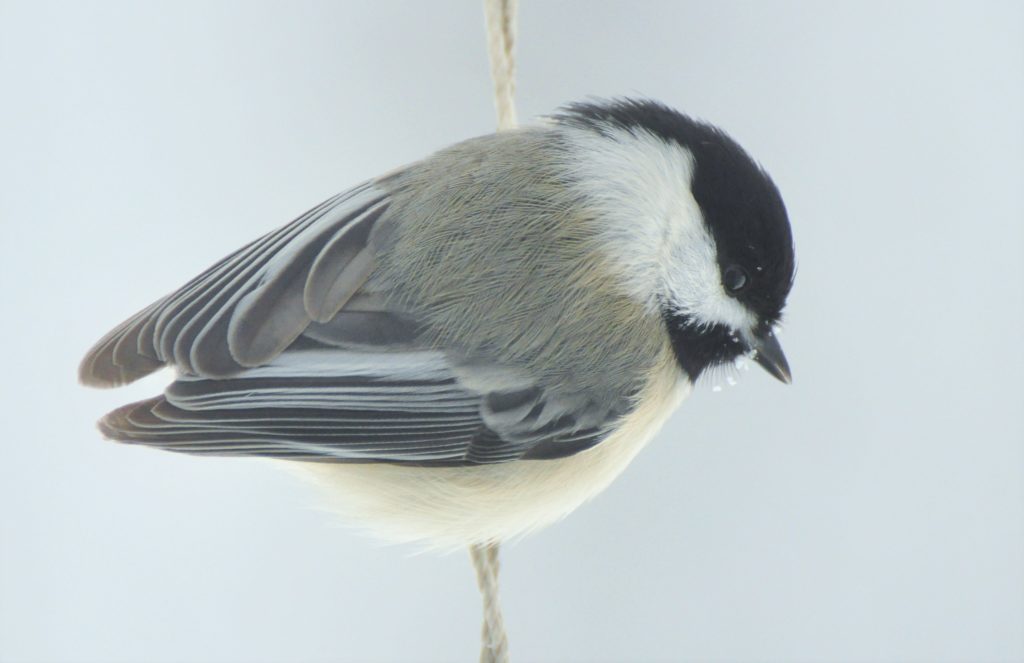Photography courtesy of Lowell Washburn, all rights reserved.

Here in northern Iowa, the first week of February has provided an incredibly diverse mix of weather – everything from 40-degree temps to double digit, below zero wind chills and new snow. On Feb. 6th, prolonged periods of freezing drizzle turned to snow during the overnight hours. As snow continued into the morning, the backyard bird feeders became predictably busy as goldfinches, pine siskins, house finches, and a host of other species appeared in droves.
Nothing unusual. Feeding birds always go nuts during significant snowfall events. What was out of the ordinary, however, was the fact that several of the birds were arriving without their tails. Included among the tailless were house finches, goldfinches, siskins, and one chickadee.
The cause seemed obvious. As overnight temperatures continued to drop, freezing drizzle had literally welded the birds’ tails to whatever cover they happened to be roosting on. When birds left the roost come morning, their tails stayed put. For some, leaving the roost probably required at least two or three vigorous attempts. It couldn’t have felt good and would certainly be a rough start to the day.
Tail feathers serve many functions. Most importantly, they serve as rudders and also act as brakes. The feathers will grow back. But in the meantime, birds will remain less maneuverable, more vulnerable to predators, and will rely solely on their wings as they brake for a landing.

 Susan Judkins Josten
Susan Judkins Josten Rudi Roeslein
Rudi Roeslein Elyssa McFarland
Elyssa McFarland Mark Langgin
Mark Langgin Adam Janke
Adam Janke Joe Henry
Joe Henry Sue Wilkinson
Sue Wilkinson Tom Cope
Tom Cope Kristin Ashenbrenner
Kristin Ashenbrenner Joe Wilkinson
Joe Wilkinson Dr. Tammy Mildenstein
Dr. Tammy Mildenstein Sean McMahon
Sean McMahon